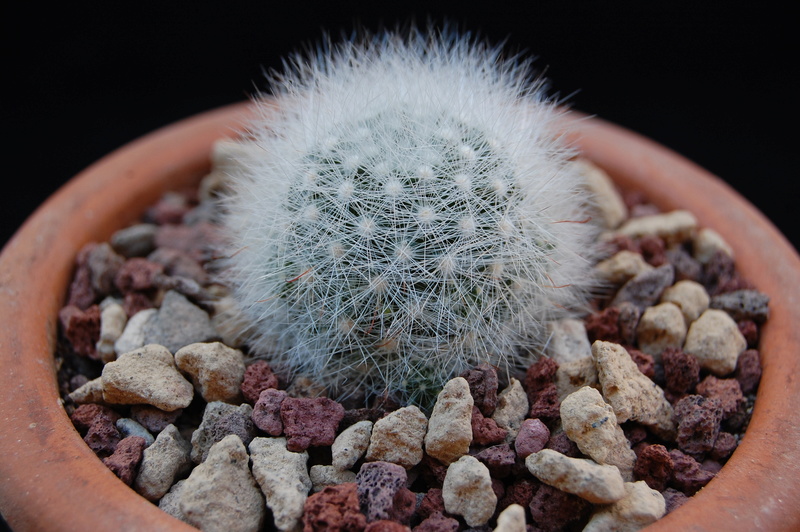No. 2. Mammillaria schwarzii
Original reference:- E. Shurly, Cactus and Succulent Journal of Great Britain, Volume 11-, page 17, 1949.
Roots: Thin, non-tap type.
Body: Very caespitose in low-growing spreading clusters. The individual heads are globose, 35 mm. wide and 30 mm high, including spines. Tubercles green, nearly cylindrical, soft in texture, arranged in 8 and 13 spirals, 7 mm. high and 3 mm. wide, with watery sap.
Axils with up to a dozen white bristles, as much as 5 mm. long.
Areoles round, 2 mm. in diameter, with white wool persisting in age.
Spines: Radials 35 - 40, slightly elevated from the horizontal, 8 mm. long straight and white, weak and almost hair-like. Centrals, 8 or 9 in a
cluster, 5 - 6 mm. long, porrect, shining white but tipped light redbrown in most instances, straight.
Flowers: Appear in May, short-tubed campanulas, 15 mm. long and 12 mm. wide. Outer perianth segments, linear tapering to point, white with narrow red midstripe. Inner perianth segments as outer, except that the midstripe is faintly green in colour. Filaments greenish-white. Anthers white. Style 10 mm. long., pale greenish-white.
Stigma lobes four, greenish-white.
Fruit: Unknown.
Type Locality: Northern Cuanajuato, Mexico, at 2,000 metres in good soil between cliffs. Grows almost only in clusters. Is largely shaded from the mid-day sun.
From "The Journal of the Mammillaria Society" Vol.1 n.2 - October 1960
Mammillaria schwarzii WTH 1068
WTH 1068 - In vertical cliffs near El Cubo - Guanajuato - Mexico

